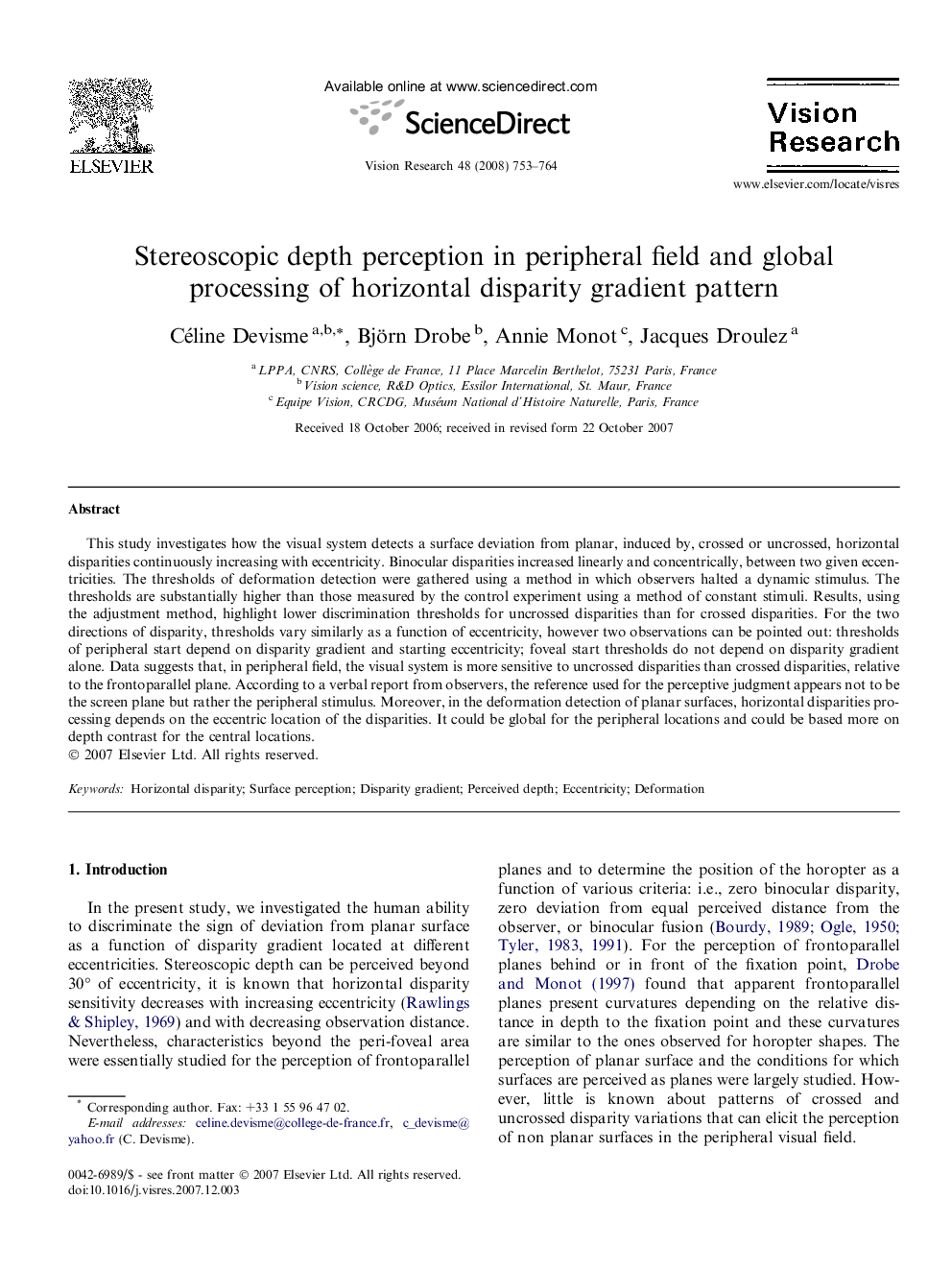| Article ID | Journal | Published Year | Pages | File Type |
|---|---|---|---|---|
| 4035054 | Vision Research | 2008 | 12 Pages |
This study investigates how the visual system detects a surface deviation from planar, induced by, crossed or uncrossed, horizontal disparities continuously increasing with eccentricity. Binocular disparities increased linearly and concentrically, between two given eccentricities. The thresholds of deformation detection were gathered using a method in which observers halted a dynamic stimulus. The thresholds are substantially higher than those measured by the control experiment using a method of constant stimuli. Results, using the adjustment method, highlight lower discrimination thresholds for uncrossed disparities than for crossed disparities. For the two directions of disparity, thresholds vary similarly as a function of eccentricity, however two observations can be pointed out: thresholds of peripheral start depend on disparity gradient and starting eccentricity; foveal start thresholds do not depend on disparity gradient alone. Data suggests that, in peripheral field, the visual system is more sensitive to uncrossed disparities than crossed disparities, relative to the frontoparallel plane. According to a verbal report from observers, the reference used for the perceptive judgment appears not to be the screen plane but rather the peripheral stimulus. Moreover, in the deformation detection of planar surfaces, horizontal disparities processing depends on the eccentric location of the disparities. It could be global for the peripheral locations and could be based more on depth contrast for the central locations.
